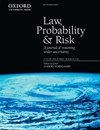物联网环境下标准必要专利的最终产品与组件级许可
IF 2.7
4区 社会学
Q1 LAW
引用次数: 0
摘要
在多层次供应链的情况下,标准必要专利(SEP)的适当许可水平是SEP社区中争论最激烈的问题之一,也是诺基亚和戴姆勒之间持续争议的关键。争论的焦点在于SEP持有人是否有(或应该)有义务向任何实现者(包括组件制造商)授予许可,或者SEP持有人是否有(或应该)只在最终产品层面自由授予许可。在研究了支持和反对每种许可模式的各种论点之后,我们认为在物联网的背景下,有强有力的政策理由来促进组件级许可。组件级许可更有可能降低交易成本,刺激实现者的下游创新,同时保留SEP持有人的创新动机。在积极的层面上,我们研究了向标准化机构做出FRAND承诺的SEP持有人是否有义务根据合同法或欧盟竞争规则向组件供应商授予许可证。我们认为,正确地解释,ETSI的知识产权政策要求SEP持有人授权任何寻求此类许可的实施者,无论后者在供应链中的位置如何。假设SEP所有人根据TFEU第102条拥有支配地位,那么基于欧盟竞争法可以得出类似的结论。本文章由计算机程序翻译,如有差异,请以英文原文为准。
End-product- vs Component-level Licensing of Standard Essential Patents in the Internet of Things Context
The appropriate level of licensing Standard Essential Patents (SEPs) in the case of a multi-tiered supply chain is among the most hotly debated issues in the SEP community and at the crux of an ongoing dispute between Nokia and Daimler. The debate centres on whether the SEP holder is (or should be) under an obligation to grant a license to any implementer, including component makers, or whether the SEP holder is (or should be) free to only license at the end-product level. After examining the various arguments raised in favour of and against each licensing model, we consider there are strong policy reasons to promote component-level licensing in the context of the Internet of Things. Component-level licensing is more likely to reduce transaction costs and spur downstream innovation of implementers, while preserving the SEP holders’ incentives to innovate. At a positive level, we examine whether a SEP holder that has given a FRAND commitment to a standardization body may be under an obligation under contract law or EU competition rules to grant a license to component suppliers. We consider that, properly interpreted, ETSI’s IPR Policy obliges SEP holders to license any implementer that seeks such license, regardless of the latter’s position in a supply chain. Assuming that the SEP owner holds a dominant position per Article 102 TFEU, it is argued then a similar conclusion can be reached on the basis of EU competition law.
求助全文
通过发布文献求助,成功后即可免费获取论文全文。
去求助
来源期刊

Law Probability & Risk
MATHEMATICSSTATISTICS & PROBABILITY&-STATISTICS & PROBABILITY
CiteScore
2.10
自引率
28.60%
发文量
8
期刊介绍:
Law, Probability & Risk is a fully refereed journal which publishes papers dealing with topics on the interface of law and probabilistic reasoning. These are interpreted broadly to include aspects relevant to the interpretation of scientific evidence, the assessment of uncertainty and the assessment of risk. The readership includes academic lawyers, mathematicians, statisticians and social scientists with interests in quantitative reasoning.
The primary objective of the journal is to cover issues in law, which have a scientific element, with an emphasis on statistical and probabilistic issues and the assessment of risk.
Examples of topics which may be covered include communications law, computers and the law, environmental law, law and medicine, regulatory law for science and technology, identification problems (such as DNA but including other materials), sampling issues (drugs, computer pornography, fraud), offender profiling, credit scoring, risk assessment, the role of statistics and probability in drafting legislation, the assessment of competing theories of evidence (possibly with a view to forming an optimal combination of them). In addition, a whole new area is emerging in the application of computers to medicine and other safety-critical areas. New legislation is required to define the responsibility of computer experts who develop software for tackling these safety-critical problems.
 求助内容:
求助内容: 应助结果提醒方式:
应助结果提醒方式:


